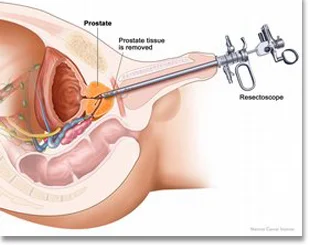Laser Endo-Urology Surgery
Introduction
Laser Endo-Urology Surgery
Endourology is the minimally invasive discipline in which small telescopes and lasers are used to treat tumors, strictures, or congenital anomalies of the bladder, ureter, and kidney. Members of the Department of Urology are actively pursuing the aetiology and treatment of transitional cell cancer of the upper urinary tract, scar tissue formation (strictures), and the treatment of ureter pelvic junction obstruction. The Department of Urology is active in the minimally invasive therapy of both benign and malignant disease. The Department of Urology faculty members treats patients through our affiliated clinical sites. We are dedicated to the thorough evaluation and minimally invasive treatment of stones, tumors, and congenital anomalies of the kidney, ureter, and bladder. The latest minimally invasive techniques are used to treat stones in the upper and lower urinary tract; these techniques include extracorporeal shock wave lithotripsy (ESWL) using two states of the art lithotripters.
This is a very important question that patients may ask when they receive their diagnosis. The ultimate determination of candidacy will require an evaluation by an endourologist/laparoscopist. Important considerations include a patient’s specific medical history and the particular nature of his or her disease. The following description of common endourologic and laparoscopic procedures is meant as a guide and educational tool for the patient.
Endourological procedures includes
1. Urethroscopy: used to treat strictures or blockages of the urethra.
2. Cystoscopy: used to treat bladder stones and tumors. Obstructing prostate tissue can be removed with this approach as well (a procedure called “TURP”). Flexible plastic tubes called stents can be passed up the ureter using cystoscopy and x-rays to relieve blockage of the ureter.
3. Ureteroscopy: used to treat stones and tumors of the ureter.
4. Nephroscopy: used to treat stones and tumors of the kidney lining.



